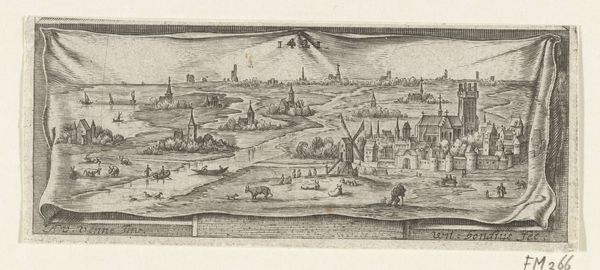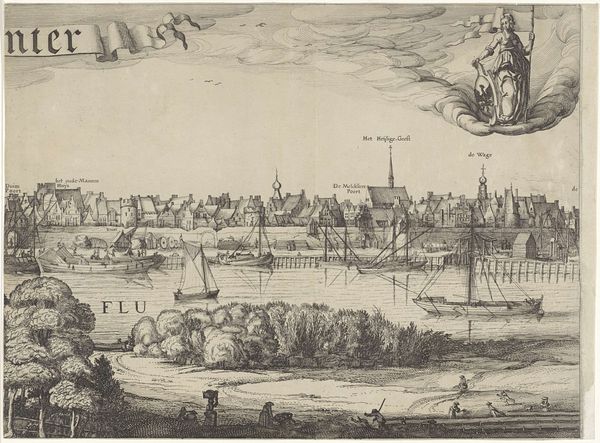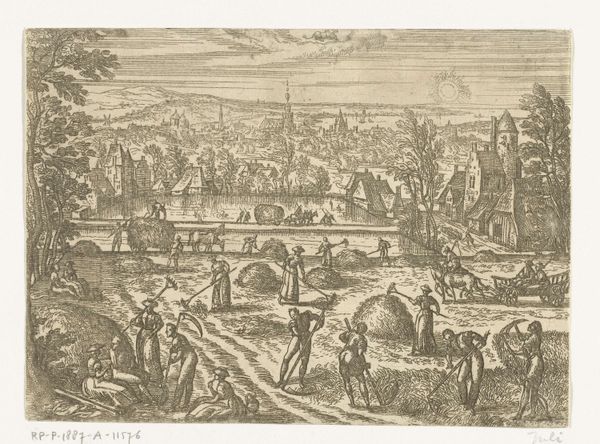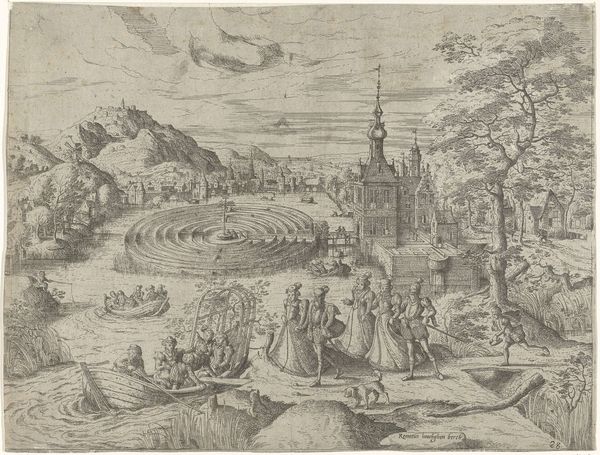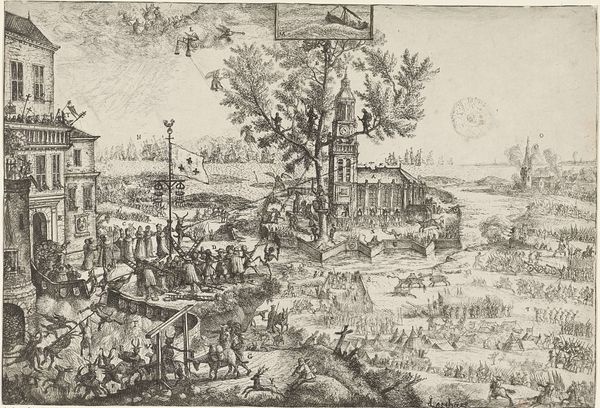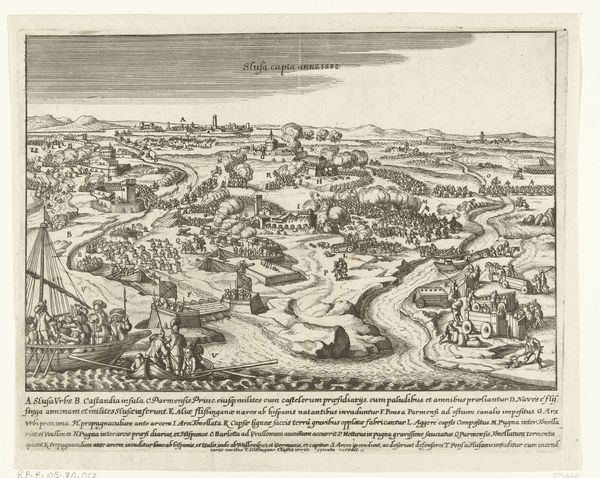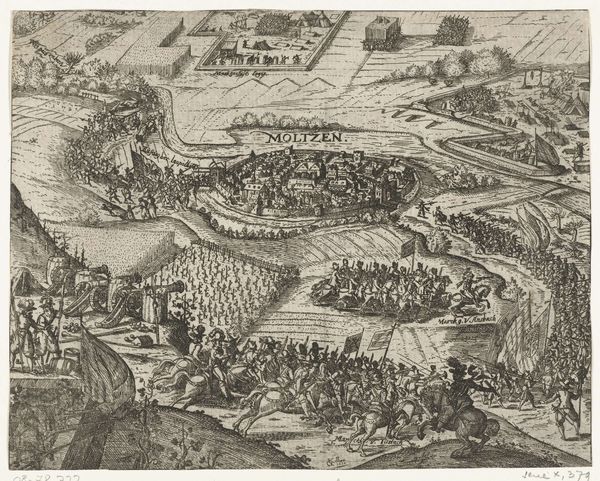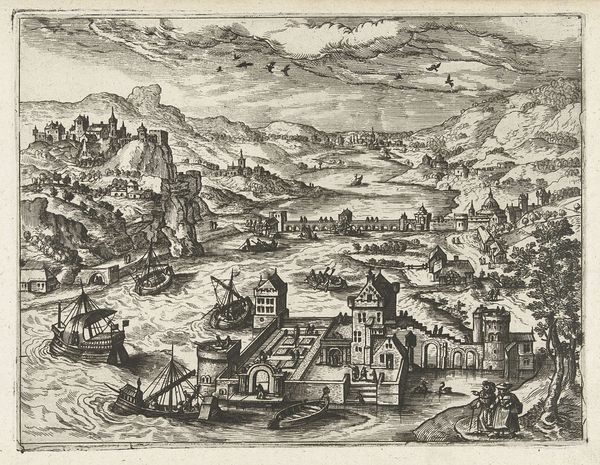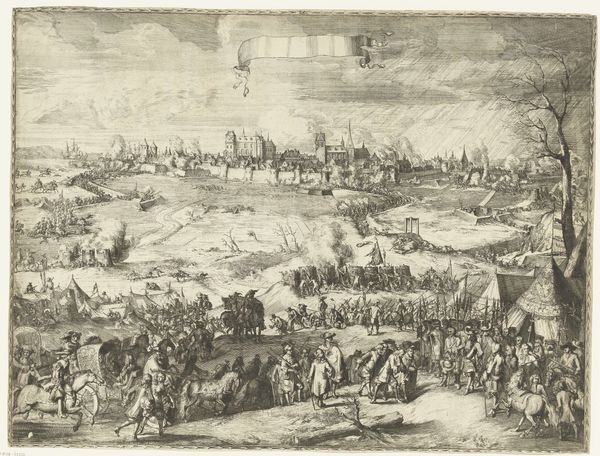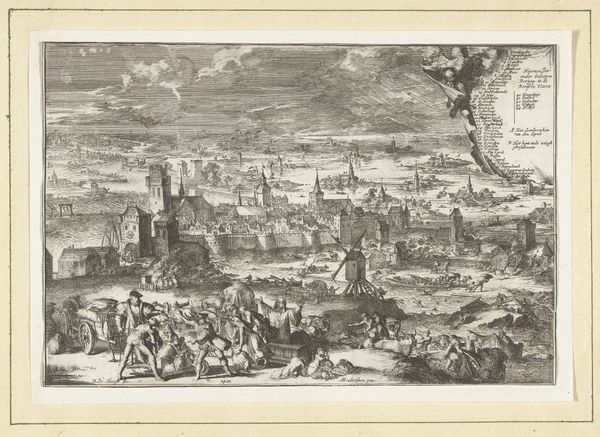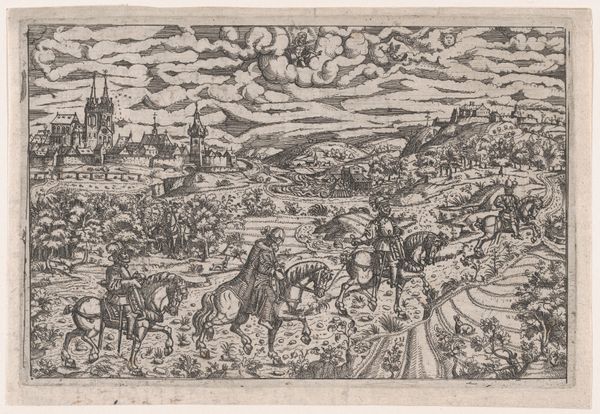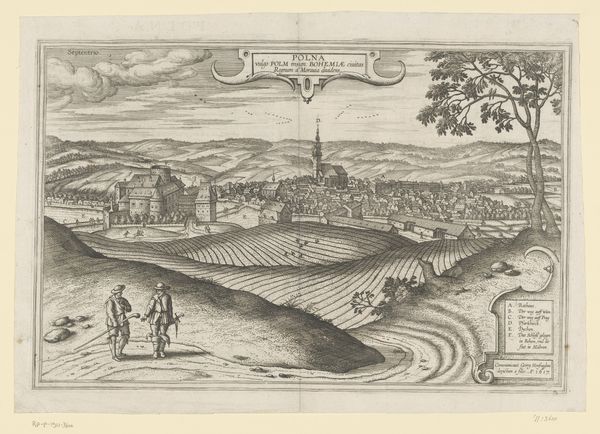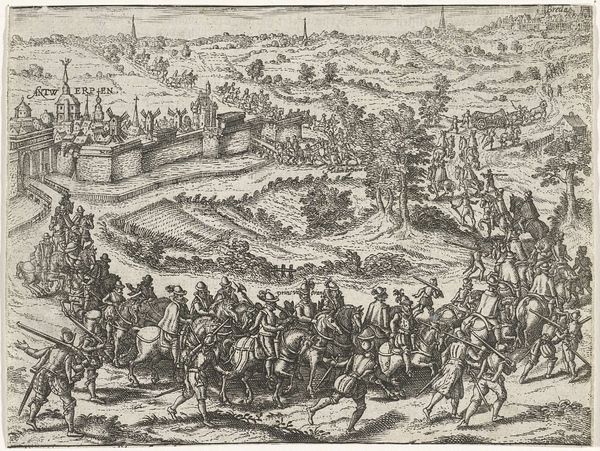
drawing, print, etching, intaglio, paper, engraving
#
drawing
# print
#
etching
#
intaglio
#
landscape
#
paper
#
cityscape
#
genre-painting
#
history-painting
#
northern-renaissance
#
engraving
Dimensions: height 380 mm, width 500 mm
Copyright: Rijks Museum: Open Domain
Curator: This etching by Frans Hogenberg, created in 1593, offers a panoramic view of "Sevilla met vele figuren op de voorgrond"—Seville with many figures in the foreground. It’s a wonderfully detailed piece. Editor: It’s quite striking, the contrast between the ordered city in the background and the bustling, almost chaotic scene playing out in the foreground. It gives a real sense of a society’s diverse activities and social classes. Curator: Absolutely. Hogenberg’s skilled use of engraving techniques on paper is remarkable here. Notice the detailed rendering of the city’s architecture, achieved with layered lines and cross-hatching to give depth and texture. He also skillfully incorporates figures and landscape, typical of Northern Renaissance printmaking. Editor: Looking closer, it is difficult to determine whether Hogenberg means for us to take this scene at face value, as simply representative of quotidian occurrences within Seville, or whether there may be some specific political narrative attached. Notice how the various groupings, some in transit, some stationary, indicate very clear status within this hierarchy of the time. What stories do you think they are attempting to portray? Curator: Hogenberg’s cityscapes often functioned within a specific historical context, documenting and celebrating important events and cultural aspects. It served both informational and artistic purposes, revealing the meticulousness involved in its production, considering that all this detail would have been carved by hand. Editor: And speaking to the material of the artwork itself, the creation of multiple prints democratized the image. It's fascinating to consider the print’s journey and impact: Who commissioned it? Who could afford it? Where did copies of the work eventually circulate? It forces a social interrogation alongside art appreciation. Curator: Precisely. These details give insight into the economic systems supporting such craftsmanship, from sourcing quality paper to marketing and selling the finished prints, which ultimately would be dispersed amongst people throughout various countries. It is the system of its making, more so than the art itself that gives the artwork its intrigue. Editor: I agree completely. For me, Hogenberg's print encapsulates a moment of cultural negotiation, reminding us of art's power to document, disseminate, and shape perspectives of an era through its distribution and availability, therefore revealing implicit values through subject matter, which become the legacy. Curator: I see it primarily as a window into the artisanal skill and labor practices of the 16th century—a reminder of how much work went into creating these seemingly simple paper objects that ended up as artifacts themselves, their social context now inevitably woven into its materiality.
Comments
No comments
Be the first to comment and join the conversation on the ultimate creative platform.
